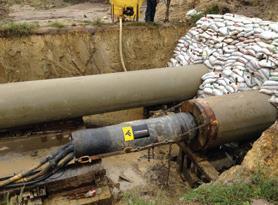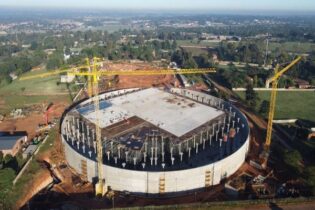This year is a significant year for South Africa and its citizens. It marks four years since the Soccer World Cup was held on local soil and, more importantly, it also ushers in the general elections.
As in the past, each general election has a pervading theme throughout: the birth of new democracy, economic growth, job creation etc. This time around, service delivery is at the forefront The City of Cape Town, with R19.5 billion worth of assets,which includes approximately10 438 km of water and9 021 km of sewer networks, has also sought to address these issues (Water Services Development Plan for the City of Cape Town 2011/12 – 2015/16 Final Report March 2011). Thecity has implemented a number of innovative projects that showcase the potential benefits of municipalities working in conjunction with the private sector where they are able to implement innovative construction solutions while providing service delivery, preserving the natural environment and promoting sustainable growth. One such project was the upgrade of the existing sewer pump station near Dunoon. This project required the installation of two 600 mm diameter pipelines across a heavily trafficked dual-carriage roadway.A specialist trenchless subcontractor was electedto install two 1 064 mm diameter steel pipelines to house the 600 mm diameter ductile iron pipelines. Both 56 m long steel pipelines were installed by means of pipe ramming. The use of this innovative construction technique not only saved local road users from the massive disruption and inconvenience that would have resulted from using open cut excavation, it also safeguarded the existing road infrastructure from premature deterioration often caused by excavation through the road surface.
Also, in the Somerset West area, a 400mm diameter effluent main was installed where a large section of this pipeline traversed a green area which was listed as environmentally sensitive by the appointed environmentalists.Aspecialist trenchless contractor was appointed to install the160m section of 400 mm diameter pipeline by means of horizontal directional drilling.The installation was successfully completed byJaco van Zyl, site manager for the drilling contractor TT Innovations. He also commented on the recent turnaround seen by employers and stakeholders who “appear to be putting the environment first”by statingthat it’s a case of ‘progress versus preservation’ where “growth should not be at the expense of our natural heritage – especially if alternative construction methods such as trenchless technology exists”. Sustainable growth is enabled through effective asset management. Here, the City of Cape Town is making significant strides in upgrading its underground assets.Large portions of the water and sewer pipeline networksare being replaced by means of pipe bursting. In brief, this trenchless pipe replacement method uses pneumatic or hydraulic energy to displace and fragment (‘burst’) the existing pipeline while simultaneously installing a new HDPE pipeline along the same alignment and grade as the existing route. This form of pipe replacement is highly effective in high-density residential areas where the existing water and sewer infrastructure is at breaking-point due to the design life of the underground assets being exceeded. TT Innovations, one of several contractors appointed by the City of Cape Town to undertake pipe replacement by means of pipe bursting, reports that it is able to install up to 300 m of water pipe per day without causing any major disruption to the local residents. The trenchless construction sector is specifically geared towards swift and efficient pipeline replacement, installation and rehabilitation – all under the guiding principles of preserving the natural environment, reducing disruption and inconvenience, as well as rapid construction. The city has shown intent by utilising this sector for various projects; however, more needs to be done to eradicate the sewer maintenance backlog and stem the flow of water losses if the city wishes to meet its 2015 strategic objectives, namely: to decrease sewer over-flows by 20% and to reduce unaccounted-for water to only 15% (Water Services Development Plan for the City of Cape Town 2010/11 – 2013/14 Executive Summary).







